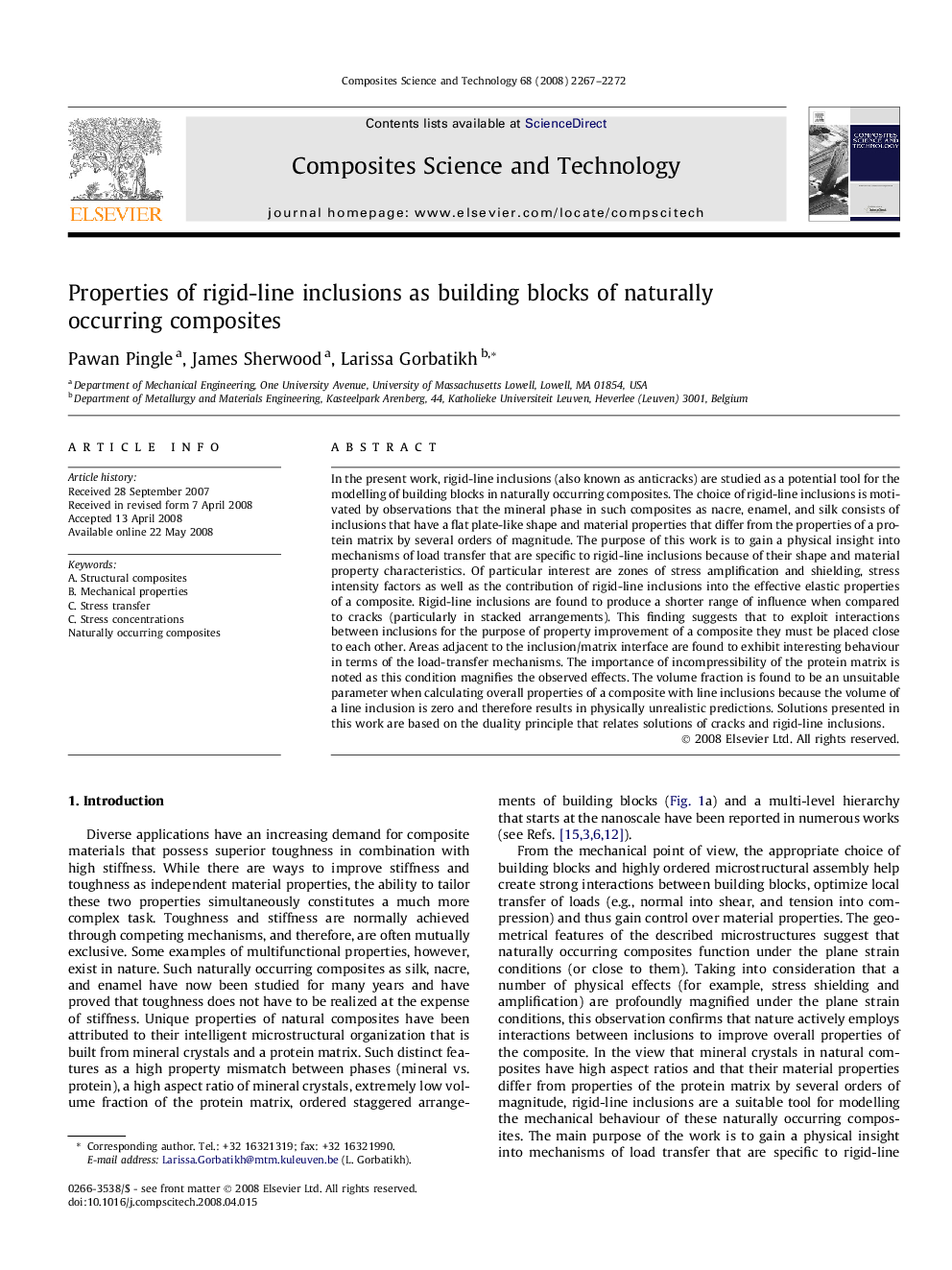| Article ID | Journal | Published Year | Pages | File Type |
|---|---|---|---|---|
| 822024 | Composites Science and Technology | 2008 | 6 Pages |
In the present work, rigid-line inclusions (also known as anticracks) are studied as a potential tool for the modelling of building blocks in naturally occurring composites. The choice of rigid-line inclusions is motivated by observations that the mineral phase in such composites as nacre, enamel, and silk consists of inclusions that have a flat plate-like shape and material properties that differ from the properties of a protein matrix by several orders of magnitude. The purpose of this work is to gain a physical insight into mechanisms of load transfer that are specific to rigid-line inclusions because of their shape and material property characteristics. Of particular interest are zones of stress amplification and shielding, stress intensity factors as well as the contribution of rigid-line inclusions into the effective elastic properties of a composite. Rigid-line inclusions are found to produce a shorter range of influence when compared to cracks (particularly in stacked arrangements). This finding suggests that to exploit interactions between inclusions for the purpose of property improvement of a composite they must be placed close to each other. Areas adjacent to the inclusion/matrix interface are found to exhibit interesting behaviour in terms of the load-transfer mechanisms. The importance of incompressibility of the protein matrix is noted as this condition magnifies the observed effects. The volume fraction is found to be an unsuitable parameter when calculating overall properties of a composite with line inclusions because the volume of a line inclusion is zero and therefore results in physically unrealistic predictions. Solutions presented in this work are based on the duality principle that relates solutions of cracks and rigid-line inclusions.
